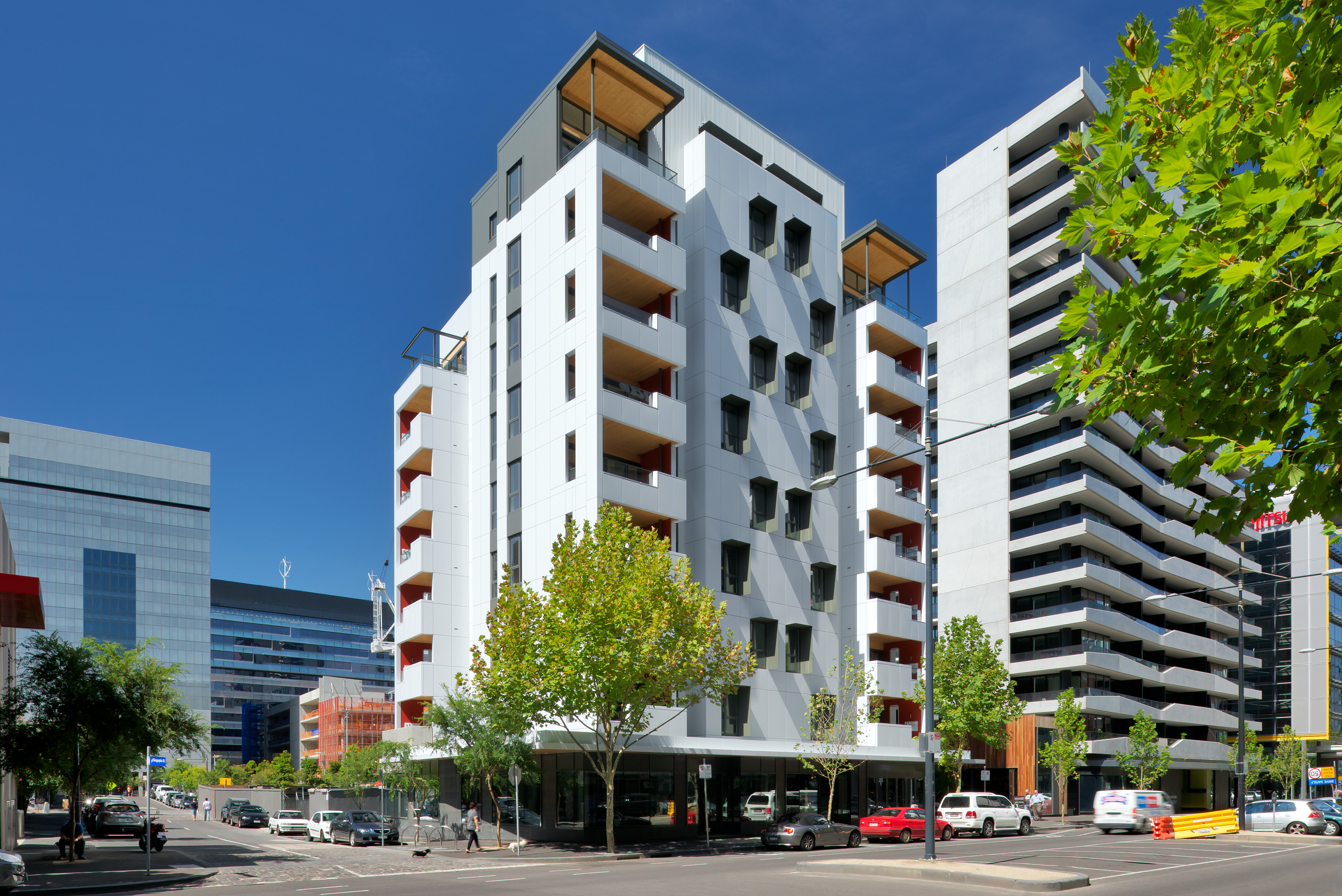At a meeting hosted by the White House Rural Council, Agriculture Secretary Tom Vilsack announced a new partnership to train architects, engineers, and builders about the benefits of advanced wood building materials, and plans for a forthcoming prize competition to design and build high-rise wood demonstration projects.
Innovative use of wood products is already beginning to change the face of construction across the country, and USDA is undertaking efforts to support these advancements. These efforts also support President Obama's Climate Action Plan goal of preserving the role of forests in mitigating climate change.
Wood may be one of the world's oldest building materials, but it is now also one of the most advanced, said Vilsack. Building stronger markets for innovative new wood products supports sustainable forestry, helps buffer reduce greenhouse gas emissions, and puts rural America at the forefront of an emerging industry.
Presently, the market for wood and other related forest products supports more than one million direct jobs, many in rural America. As these markets expand, so will the economic opportunities.
The new training program Secretary Vilsack announced will include a $1 million investment from the Forest Service and will be done in partnership with WoodWorks, a non-profit organization that provides technical support, education, and resources related to the design of modern wood buildings for architects, engineers, and developers.
The Secretary also announced plans to launch a new prize competition, expected to begin later this year, for developers, institutions, organizations, and design teams competing to demonstrate the architectural and commercial viability of using sustainable wood products in high-rise construction.
The Department is planning to invest up to $1 million to launch the competition. One non-profit partner, the Binational Softwood Lumber Council, has committed an additional $1 million for the competition. The competition will help spur increased sustainability in construction and will give priority to applicants that source materials from rural domestic manufacturers and domestic, sustainably-managed forests.
Emerging engineered wood technologies can be used in industrial building projects such as tall buildings and skyscrapers, as well as other projects. By some industry estimates, a 3-5 story building made from emerging wood technologies has the same emissions control as taking up to 550 cars of the road for one year. Wood-based designs have also been demonstrated to improve energy efficiency, thereby reducing energy consumption for heating and cooling.
These announcements were made as part of a the Building With Wood: Jobs and the Environment workshop hosted by the White House Rural Council, which included architects, builders, designers, wood manufactures, foresters, state officials, university leaders and representatives from the USDA, General Services Administration, Department of the Interior, Federal Emergency Management Agency and Department of Defense. They also are part of USDA's overall strategy to promote the use of wood as a green building material. USDA's Forest Products Laboratory in Madison, Wisconsin has invested over $2 million in research and technical support for emerging wood technologies. The Forest Products Laboratory has created additional opportunities for emerging wood technologies to be used in housing developments and other green building demonstration projects.
When President Obama signed the 2014 Farm Bill in February he directed his Administration, working through the White House Rural Council, to lead a new Made in Rural America export and investment initiative. This initiative is charged with bringing together federal resources to help rural businesses and leaders take advantage of new investment opportunities and access new customers and markets both at home and abroad. White House Rural Council leadership on advanced wood products is an example of how the Administration is moving forward on dual goals of domestic production and sustainability.
Related Stories
Sponsored | BD+C University Course | Aug 24, 2022
Solutions for cladding performance and supply issues
This course covers design considerations and cladding assembly choices for creating high-performance building envelopes — a crucial element in healthy, energy-efficient buildings.
Sponsored | | Aug 4, 2022
Brighter vistas: Next-gen tools drive sustainability toward net zero line
New technologies, innovations, and tools are opening doors for building teams interested in better and more socially responsible design.
Building Materials | Aug 3, 2022
Shawmut CEO Les Hiscoe on coping with a shaky supply chain in construction
BD+C's John Caulfield interviews Les Hiscoe, CEO of Shawmut Design and Construction, about how his firm keeps projects on schedule and budget in the face of shortages, delays, and price volatility.
Building Materials | Jul 20, 2022
LP Building Solutions celebrates 50th anniversary at NYSE ceremony
LP Building Solutions celebrates 50th anniversary at NYSE ceremony.
Building Materials | Jun 20, 2022
Early-stage procurement: The next evolution of the construction supply chain
Austin Commercial’s Jason Earnhardt explains why supply chain issues for the construction industry are not going to go away and how developers and owners can get ahead of project roadblocks.
Sponsored | BD+C University Course | May 10, 2022
Design guide for parapets: Safety, continuity, and the building code
This course covers design considerations for parapets. The modern parapet must provide fire protection, serve as a fall-protective guard, transition and protect the roof/facade interface, conceal rooftop equipment, and contribute to the aesthetic character of the building.
Sponsored | BD+C University Course | May 10, 2022
Designing smarter places of learning
This course explains the how structural steel building systems are suited to construction of education facilities.
Sponsored | BD+C University Course | May 5, 2022
Designing with architectural insulated metal wall panels
Insulated metal wall panels (IMPs) offer a sleek, modern, and lightweight envelope system that is highly customizable. This continuing education course explores the characteristics of insulated metal wall panels, including how they can offer a six-in-one design solution. Discussions also include design options, installation processes, code compliance, sustainability, and available warranties.
Sponsored | BD+C University Course | May 3, 2022
For glass openings, how big is too big?
Advances in glazing materials and glass building systems offer a seemingly unlimited horizon for not only glass performance, but also for the size and extent of these light, transparent forms. Both for enclosures and for indoor environments, novel products and assemblies allow for more glass and less opaque structure—often in places that previously limited their use.
Sponsored | BD+C University Course | Apr 19, 2022
Multi-story building systems and selection criteria
This course outlines the attributes, functions, benefits, limits, and acoustic qualities of composite deck slabs. It reviews the three primary types of composite systems that represent the full range of long-span composite floor systems and examines the criteria for their selection, design, and engineering.

















